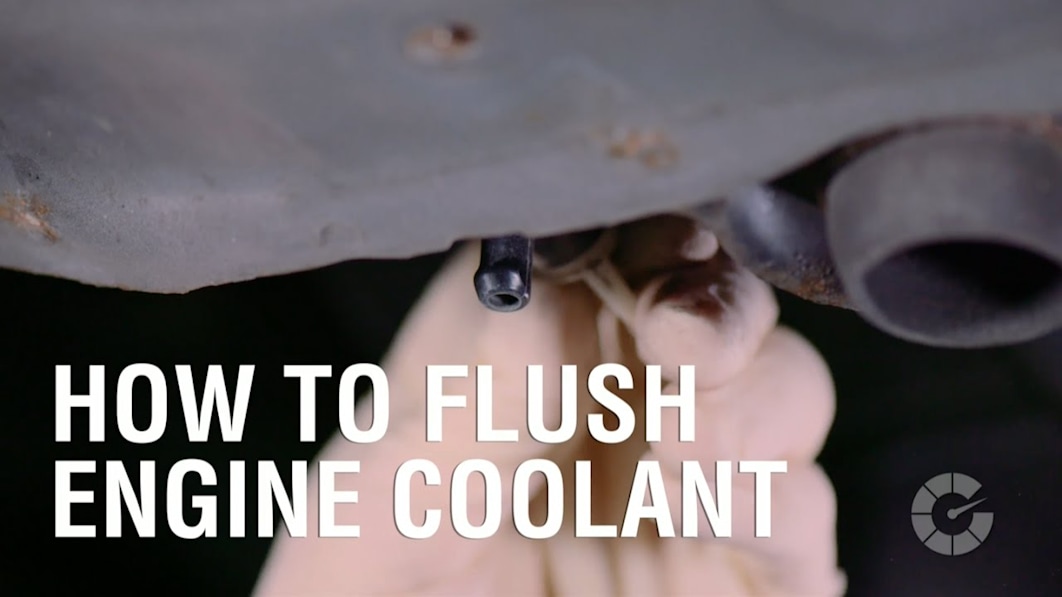How to flush engine coolant | Autoblog Wrenched

Autoblog may receive a share from purchases made via links on this page. Pricing and availability are subject to change.
Don’t let your engine overheat! Make sure you change your engine coolant. Don’t worry if you don’t know how… We’ll show you on this episode of Wrenched!
Watch all of our Autoblog Wrenched videos for more tips on how to diagnose, fix, and modify cars from professional detailer Larry Kosilla. While you’re at it, check out Larry’s other car cleaning and maintenance video series Autoblog Details!
Materials Used:
Instructions (Video Transcript):
[00:00:00] – [Host] Every two years the corrosion protection within our engine’s cooling system deteriorates leaving your aluminum radiator, heater core, water pump and cylinder heads exposed to sludge filled, rusted goop potentially causing the engine to overheat. Fortunately, it’s an easy fix, and here are the tools you’ll need to do it yourself: screwdriver, catch can, distilled water, engine coolant, gloves, safety glasses, basic tools, rags and a funnel. I’m Larry Kosilla, pro-detailer
[00:00:30] and trainer for the last 15 years, but when it comes to what’s under the hood, I’m the student. Follow me as experts teach me how to diagnose, fix and modify cars on Autoblog’s Wrenched. So how often should you change your coolant? – On most vehicles, you should change your coolant every 30,000 miles. Over time, coolant can become acidic and it will eventually break down all the metal components inside your engine. – [Larry] First, we need to let the engine cool down so that we don’t get burned or have pressurized antifreeze shoot out of the radiator
[00:01:00] if opened when hot. Remember, antifreeze is a toxic fluid, so take extreme care. While we’re waiting for the car to cool, Joe has me check the owner’s manual to see how much coolant the system requires and what type of coolant the manufacturer recommends. With the hoses cooled to the touch, open the radiator cap while holding a rag in case the coolant shoots out. Next, search for the petcock at the bottom of the radiator and move your catch can into place. If there’s not a petcock present, then simply remove the lowest hose connected
[00:01:30] to the radiator core, that’ll work as well. Keep in mind, if there’s a shield on the bottom of the engine, you’ll most likely need to remove it before you can gain access to the petcock. Twist the knob and allow the petcock to drain for the next few minutes until it begins to drip. At this point, tighten the petcock or replace the lowest hose and then head back to the top of the engine. Now although a lot of fluid came out, it’s actually not all that’s in your car’s plumbing system. At cold temperatures, your engine’s thermostat is closed,
[00:02:00] trapping the old coolant behind it especially in your heater core. This is what a typical car thermostat looks like. In this cool demonstration, we used a blow torch to mimic your engine’s coolant getting warm from driving and causing the valve to open, Likewise when it it cools, it will close trapping the fluid behind the valve which needs to be replaced as well. Next, fill your radiator reservoir with distilled water. The reservoir will have hoses connected to the radiator if you have trouble finding it.
[00:02:30] Once full, replace the cap and then start your car. Allow the vehicle to get up to operating temperature with your heat on high. This will cause the thermostat to open and flush the distilled water back through the engine block and heater core chasing out the remaining fluid, hence the name coolant flush. After 10 minutes or so, turn the engine off and let the car completely cool once again. Then, reopen the petcock or remove the lower hose once again to get the last bit of dirty fluid out. Then tighten the petcock or reattach the hose,
[00:03:00] essentially repeat the same process as you did before. Be sure to properly dispose of the spent fluid. This is toxic and must be disposed of properly. Check your local auto parts store to see if they recycle or can recommend where to go. Now that most, if not all the fluid has been flushed, fill your radiator with 50% coolant and 50% water. Auto parts stores do offer premixed 50-50 coolant gallons for convenience, but remember there’s already a bit of leftover water in the system from the last flush so keep that in mind.
[00:03:30] We decided to go with 100% coolant and mix it with water 50-50 ourselves. So for this particular car, it’s three quarts of concentrated coolant mixed with two and three quarters quarts of distilled water for a total coolant capacity of six quarts as recommended in our owner’s manual. It’s also recommended to replace the coolant with the same color or brand coolant previously found in your car to avoid corrosion inhibitor co-mixing issues. Protecting the metal radiator from developing rust
[00:04:00] is essential to avoid forcing tiny bits of oxidized shavings through the water pump and subsequently the rest of the engine and heating system. Changing your coolant can extend the life of these parts and save you money and a headache in the future. For more how-to car repair videos visit autoblog.com/wrenched. I’m Larry Kosilla from ammonyc.com as always, thanks for watching. (upbeat hiphop music)



